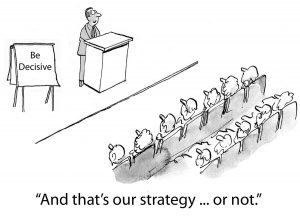Trust is the Key Element

Have you ever been in a situation with other people where something just seems to be missing? There is an uneasiness in conversations. This really stands out among teams. Discussions about work and assignments just seem to have this “air” about them. Something just doesn’t feel quite right.
Then it hits you. There is a lack of trust. Either you don’t trust them or you get the eerie feeling that they don’t trust you. It may even be both. As a result, things are not flowing. Work is not nearly as productive as it could be. You may even be missing deadlines. Communication suffers. The team just does not mesh together. And until that is resolved, it will only get worse.
Trust is Character
Some years back UCLA did a survey of 1300 executives around the country and they asked for five traits that were keys to advancement for employees. All 1300 of them included INTEGRITY somewhere in the list.
71% of executives rated INTEGRITY AS NUMBER ONE TRAIT!
- Bob Burgwill tell you that “all things being equal people will do business with people they know, like, and TRUST”.
- The first law of the Boy Scout Law , which defines how a Boy Scout is supposed to live their life, is A Scout is Trustworthy. Here’s the explanation: “A Scout always tells the truth. He is honest and keeps his promises. People can depend on him.”
The Key to Any Relationship

Our trustworthiness is also quite obviously a key to our relationships with others.
- If your spouse or significant other can’t trust you, the relationship is destroyed.
- Once your friends learn not to trust you and count on you, then they will simply no longer expect anything from you and eventually will simply stop being around you or having your around.
- When your co-workers can’t trust you, then you will not be able to function as a team.
- If your employees can’t trust you, they will become disengaged and productivity suffers; not to mention the bottom line.
We know this, yet somehow the focus on trust seems to be lost somewhere in the desire to “close the deal” or secure what we want.
The Kiss of Trust
Trust brings opportunity. Many years ago I was part of a training development company that had just made the INC 500 list.
Opportunity to Build Trust
A new software, something called
, was coming out. The president, a man of great vision, saw that it would become big. We needed to produce a premier training product for this. At the same time, he wanted a total redesign of the product. He came to me. “I’m putting you in charge of this,” he said. “I’ve seen your work and I think you are the man to give us something totally new. Raise the bar! No limits!”
Then he leaned over and KISSED MY SHOE!
Trust is a Two-Way Street
Here are some ways you can build trust on a daily basis:
 LEARN TO TRUST – start small by delegating out small tasks you would normally do to individual team members. Give them a deadline. Offer support. And let them have at it. I believe you will be surprised at the results.
LEARN TO TRUST – start small by delegating out small tasks you would normally do to individual team members. Give them a deadline. Offer support. And let them have at it. I believe you will be surprised at the results.- PRODUCE RESULTS – when you have a proven track record of accomplishing things people will trust you to do the things you say you are going to do. Meet the deadline or accomplish the task no matter how challenging it is.
- GIVE YOUR WORD ONLY WHEN YOU MEAN IT – Don’t make promises you can’t keep.
- KEEP YOUR WORD AT ALL COSTS – This is critical. When people know that no matter what you are going to do what you say you are going to do, then your trustworthiness grows and builds over time.
- BE CONSISTENT – Consistency is a key to both trustworthiness and integrity. People need to know what they can count on.
- RESPECT YOURSELF AND OTHERS – When you show respect for other people and respect yourself, then people will believe and trust that you are who you say you are and you will do what you say you are going to do.

 WARNING! DON’T READ THIS WHILE YOU ARE HUNGRY! There are going to be a lot of food references here but they all have a point. It leads to what it can teach us about team success.
WARNING! DON’T READ THIS WHILE YOU ARE HUNGRY! There are going to be a lot of food references here but they all have a point. It leads to what it can teach us about team success. Here’s a cool exercise you can use with your team or with a group of leaders to help them understand inclusion. I learned this with leader training we use for teaching
Here’s a cool exercise you can use with your team or with a group of leaders to help them understand inclusion. I learned this with leader training we use for teaching 
 Have you ever let a pending decision freeze you? You know a choice has to be made. All of the options have pros and cons associated with them. You feel like EVERYTHING is hinging on this one decision you need to make. What do you do? The decisive leader knows how to make critical decisions and acts in the best interest of the team.
Have you ever let a pending decision freeze you? You know a choice has to be made. All of the options have pros and cons associated with them. You feel like EVERYTHING is hinging on this one decision you need to make. What do you do? The decisive leader knows how to make critical decisions and acts in the best interest of the team. Being a decisive leader doesn’t always mean that you are the only one who can decide. Don’t fall into that trap! It’s what ties even the most decisive person up in knots and can lead to poor decision making.
Being a decisive leader doesn’t always mean that you are the only one who can decide. Don’t fall into that trap! It’s what ties even the most decisive person up in knots and can lead to poor decision making. Before we talk about counsel keep in mind that every decision does not necessarily need to be made by you alone. The decisive leader knows when a collaborative or delegated decision is better than a command decision.
Before we talk about counsel keep in mind that every decision does not necessarily need to be made by you alone. The decisive leader knows when a collaborative or delegated decision is better than a command decision. One of the benefits of living in Central Florida is all the attractions around here. One of the attractions, of course, is
One of the benefits of living in Central Florida is all the attractions around here. One of the attractions, of course, is  You probably know someone who seems to always have it together. They are everywhere and in everything. To the naked eye they always seem to excel at everything they do.
You probably know someone who seems to always have it together. They are everywhere and in everything. To the naked eye they always seem to excel at everything they do.  In truth, the Law of Sacrifice is actually pretty simple. It’s all about priorities. Every single one of us has the same 24 hours in a day and seven days in a week. Barring
In truth, the Law of Sacrifice is actually pretty simple. It’s all about priorities. Every single one of us has the same 24 hours in a day and seven days in a week. Barring